Members
Jillian Bellovary
Assistant Professor, Queensborough Community College
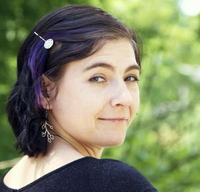 Jillian has a PhD in Astronomy from the University of Washington, and is currently an
assistant professor at Queensborough Community College. Jillian studies the formation
and evolution of massive black holes using cosmological hydrodynamic simulations. She
is interested in how they form in the early universe, how they grow to become the
behemoths we see today, and whether or not we can find them in dwarf galaxies. Jillian
served in the U.S. Peace Corps and lived in The Gambia, West Africa, for two years,
where she taught college physics and had many adventures. In her free time she enjoys
knitting socks and playing roller derby. Jillian is also avidly predicting the signatures
of merging black holes detectable by LISA.
Jillian has a PhD in Astronomy from the University of Washington, and is currently an
assistant professor at Queensborough Community College. Jillian studies the formation
and evolution of massive black holes using cosmological hydrodynamic simulations. She
is interested in how they form in the early universe, how they grow to become the
behemoths we see today, and whether or not we can find them in dwarf galaxies. Jillian
served in the U.S. Peace Corps and lived in The Gambia, West Africa, for two years,
where she taught college physics and had many adventures. In her free time she enjoys
knitting socks and playing roller derby. Jillian is also avidly predicting the signatures
of merging black holes detectable by LISA.
Alyson Brooks
Associate Professor, Rutgers
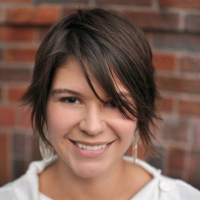 Alyson is an expert in both the formation of galaxies (especially dwarfs!) as well as
astrophysical constraints on the dark matter model. She earned a B.A. in physics from
Macalester College in 2000 and a Ph.D. in astronomy from the University of Washington
in 2008. She was a Sherman Fairchild Postdoctoral Fellow at Caltech, and the Grainger
Postdoctoral Fellow at the University of Wisconsin, Madison, before joining the
faculty at Rutgers, the State University of New Jersey. Alyson was named a 2015
Alfred P. Sloan Research Fellow, and was the 2019 recipient of the American
Physical Society's Maria Goeppert Mayer award. These days, she is using ChaNGa
to create a statistical sample of dwarf galaxy simulations, at state-of-the-art
resolution, to study all things dwarf galaxy.
Alyson is an expert in both the formation of galaxies (especially dwarfs!) as well as
astrophysical constraints on the dark matter model. She earned a B.A. in physics from
Macalester College in 2000 and a Ph.D. in astronomy from the University of Washington
in 2008. She was a Sherman Fairchild Postdoctoral Fellow at Caltech, and the Grainger
Postdoctoral Fellow at the University of Wisconsin, Madison, before joining the
faculty at Rutgers, the State University of New Jersey. Alyson was named a 2015
Alfred P. Sloan Research Fellow, and was the 2019 recipient of the American
Physical Society's Maria Goeppert Mayer award. These days, she is using ChaNGa
to create a statistical sample of dwarf galaxy simulations, at state-of-the-art
resolution, to study all things dwarf galaxy.
Charlotte Christensen
Assistant Professor of Physics, Grinnell College
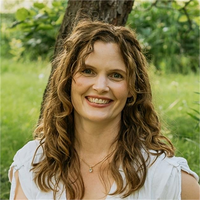 Charlotte Christensen's research has focused on the properties of feedback-driven
galactic outflows and the connection between star formation and the molecular ISM.
Charlotte Christensen's research has focused on the properties of feedback-driven
galactic outflows and the connection between star formation and the molecular ISM.
BW Keller
Postdoctoral Researcher, Universität Heidelberg
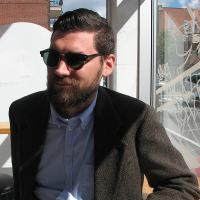 Ben Keller is postdoctoral researcher in the MUSTANG group at Universität
Heidelberg's Astronomisches Rechen-Institut. His current research involves
numerical modelling of the star formation, feedback, and interstellar medium over
cosmological timescales.
Ben Keller is postdoctoral researcher in the MUSTANG group at Universität
Heidelberg's Astronomisches Rechen-Institut. His current research involves
numerical modelling of the star formation, feedback, and interstellar medium over
cosmological timescales.
Ferah Munshi
Assistant Professor, University of Oklahoma
 Ferah is an assistant professor at the University of Oklahoma working on studying
the smallest and dimmest galaxies: from classical dwarf galaxies down into the
ultrafaint and ultradiffuse regimes. These galaxies are at the lower limits of galaxy
formation and can tell us a lot about the nature of dark matter, reionization and star
formation. Ferah primarily works with zoom-in simulations like the DC Justice League
and the Marvel-ous Dwarfs, but is also working with the Romulus volume and cluster.
Ferah is an assistant professor at the University of Oklahoma working on studying
the smallest and dimmest galaxies: from classical dwarf galaxies down into the
ultrafaint and ultradiffuse regimes. These galaxies are at the lower limits of galaxy
formation and can tell us a lot about the nature of dark matter, reionization and star
formation. Ferah primarily works with zoom-in simulations like the DC Justice League
and the Marvel-ous Dwarfs, but is also working with the Romulus volume and cluster.
Tom Quinn
Professor of Astronomy, University of Washington
 Tom has a wide range of research interests ranging in scale from granular dynamics
out to the large scale structure of the Universe. The commonality in these interests
is gravitational dynamics and particle based simulation of physical phenomena.
Tom has a wide range of research interests ranging in scale from granular dynamics
out to the large scale structure of the Universe. The commonality in these interests
is gravitational dynamics and particle based simulation of physical phenomena.
Michael Tremmel
YCAA Fellow, Yale University
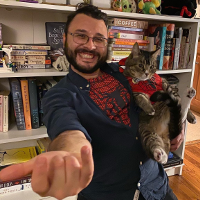 Michael's research focuses on the co-evolution of galaxies and supermassive black holes,
studying in particular the dynamical evolution of SMBHs in merging galaxies, the connection
between SMBH feedback and galaxy evolution, and the interaction between galaxies and SMBHs with
their environment. As a graduate student, Michael led the design and execution of the
Romulus Simulations which included the implementation of a novel model for SMBH
formation, growth, feedback, and dynamics in cosmological simulations. In addition to
research, Michael is passionate about public outreach and has been heavily involved in
diversity efforts such as the Pre-Major in Astronomy Program at the University of
Washington. Michael will transition to an NSF Postdoctoral Fellowship (also at Yale) in the Fall of 2020.
Michael's research focuses on the co-evolution of galaxies and supermassive black holes,
studying in particular the dynamical evolution of SMBHs in merging galaxies, the connection
between SMBH feedback and galaxy evolution, and the interaction between galaxies and SMBHs with
their environment. As a graduate student, Michael led the design and execution of the
Romulus Simulations which included the implementation of a novel model for SMBH
formation, growth, feedback, and dynamics in cosmological simulations. In addition to
research, Michael is passionate about public outreach and has been heavily involved in
diversity efforts such as the Pre-Major in Astronomy Program at the University of
Washington. Michael will transition to an NSF Postdoctoral Fellowship (also at Yale) in the Fall of 2020.